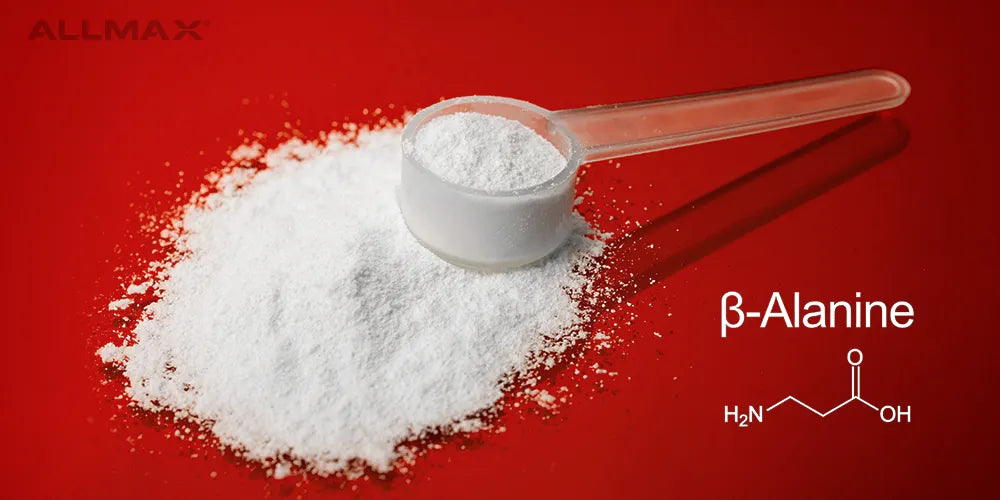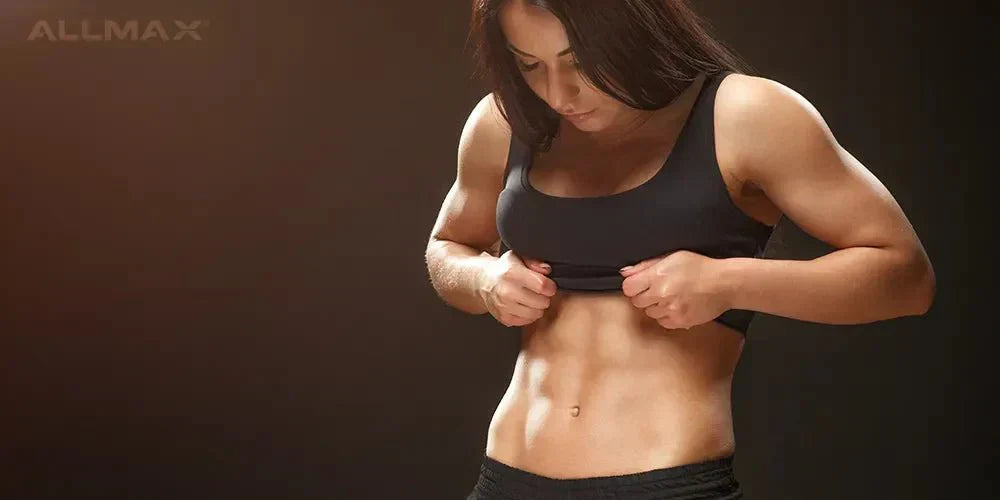Too many people neglect the overhead squat in their training. This is a shame, considering it’s one of the best exercises for overall fitness development. There’s probably not a single movement pattern that strengthens muscles, boosts mobility, and improves coordination. However, the movement can be a challenge to learn. It’s definitely not an
exercise for beginners, at least with heavy weights. You can absolutely start the process today, but should just use the bar or even a PVC pipe. In this article, we’ll go over the basic mechanics of the overhead squat. And we’ll explain the overhead squat benefits.
What Is an Overhead Squat?
The overhead squat is a lower and upper body exercise done with a barbell, some may prefer to try a dumbbell overhead squat if a barbell is not available. If you’re new to the movement, you might want to practice first with a PVC pipe, broomstick, or tight resistance band. In an overhead squat, the athlete puts a barbell over the crown of their head with a wide grip. From this position, they stabilize the weight overhead while they squat to parallel (or slightly below). See the next section for more cues. This exercise was made popular in large part due to
CrossFit workouts. It’s one of the 9 foundational of CrossFit and regularly appears in the CrossFit games.
How Do You Do an Overhead Squat?
The following section will help you break down an overhead squat. The movement can be broken into two phases: the setup and the overhead/squat portion.
Setup
Stand with your feet at shoulder-width distance. Point your toes at a 45-degree angle. There are two ways to start this exercise. Either snatch the bar from the ground or take it out of the rack on your back, then jerk it overhead. For heavier weights, the latter is preferred. Now, grip your barbell or object of choice with a snatch grip. A snatch grip is wider than your shoulders, typically out towards the second knurling on a barbell. Remember, if you’re new to this exercise, start light.
Overhead/Squat
With the bar overhead (in the top of a snatch position) push your shoulders up into the bar. This should lock your elbows and stabilizes your upper body. To initiate the squat, set your bodyweight back in your heels*. Kick your hips back to the wall behind you. Allow your knees to bend after your hips do. Bending the knees first will ensure you travel in one line down to the floor and not lean forward.
*If you have poor hip and ankle mobility, it will likely be exposed during overhead squats. Try putting 2.5 lb plates under your heels or using Olympic weightlifting shoes to help here. Keep the bar locked out overhead; the barbell should be sitting above the crown of your head the entire time. If it falls forward in front of your face or behind, fix it immediately. (Stabilizing your shoulders this way is one of the main benefits of the exercise.) Once you hit parallel (the crease of your hip drops below your knee), drive through your heels back to a standing position. Repeat the exercise or rack the bar. As a beginner using light weights, practice doing sets of 5 to 10 reps at a time. Learning how to string together reps is key.
Why Overhead Squats Are Important for Training
There are so many squat variations you can choose for your training. We have highlighted some of the overhead squat benefits as no other variation works your upper body muscles and nervous system quite like overhead squats. You might be able to back squat or
front squat more weight—in that, you certainly can—but strength isn’t the only benefit you stand to gain. Here are some reasons to add this exercise to your strength training routine.
Great Test of Total Body Strength
Front and back squats do a great job of assessing your ability to move really heavy weights with your lower and upper body. If you’re a powerlifter or bodybuilder, it might seem like these movement patterns are enough, especially if you’re trying to
maximize muscle gains. But overhead squats test your strength in a different way. You can’t muscle your way through a set of overhead squats; there is too much technique and stability involved. This movement, unlike other compound exercises, is equal parts force and grace. This is why some coaches call the overhead squat “gymnastics with a barbell.” This forces you to get really good at the fundamental aspects of stabilizing the joints in your lower and upper body and generating force in the bottom of a squat. And that translates over to other exercises. Science tells us that adding
new exercises or cross-training can boost our athletic performance. Overhead squats force us to get good at something new while reinforcing old patterns we know well.
Improved Total-Body Joint Mobility
All strength athletes and fitness enthusiasts need to work on their mobility. Lifting heavy weights can take a toll on your body. When we stretch regularly, our muscles stay limber and our joints stay healthy. Better yet, instead of stretching, we can add resistance exercises to our routine that test and boost our mobility. Overhead squats are a great example. Overhead squats improve mobility in the ankles, knees, hips, shoulders, and elbows. These are all the main joints in the lower and upper body that are responsible for movement. To execute the exercise, all of our most important joints must work together at once. Whether you use the exercise for improving your overhead range of motion or to assess where you’re at, overhead squats can be a fantastic addition to any type of training. If you find that mobility and stability are limiting factors, don’t fret. This exercise still offers the same joint mobility benefits (along with others on this list) when performed with little to no weight.
Great for Cleaning up Imbalances
Muscle imbalances are not uncommon. Many bodybuilders, powerlifters, and general fitness enthusiasts notice that one side is stronger or larger than the other. This can happen in your arms, shoulders, and even legs. While this can be frustrating—and in some cases, even hurt your status as a competitor—there are things you can do. Overhead squats are a great exercise for exposing and improving muscular imbalances in the lower and upper body. Maybe one side wavers while you hold the bar overhead. Perhaps your thoracic spine is tighter than your lumbar or cervical spine. Or perhaps you notice one ankle or knee is especially tight when dropping into the bottom of the movement. Whatever it is, noticing the imbalance is the first step. Even adding overhead squats to your warmup or cooldown routine can be useful for this reason.
Better Coordination
Being coordinated makes you a better athlete. It also protects you from injuries and helps you develop a more rounded fitness base. There’s no sense denying it: overhead squats require a great deal of skill and coordination. With the arms overhead and your legs in a low squat, there’s a ton going on. Mastering the technique is an amazing feat of coordination. This can translate over into better balance and stability in other athletic feats. If you’re older, coordination is one of the most important areas of your fitness that you can develop. Resistance training is already a proven way to prevent injuries and falls as you get older. Mastering the overhead squat is one of the best things you can do to promote healthy aging and protect yourself.
Good for Olympic Weightlifting
If you have any aspirations of competing or even trying Olympic weightlifting, you must do overhead squats. For those who don’t know, the two Olympic lifts are the snatch and clean and jerk. Athletes get three attempts at each exercise to establish a one-rep maximum. A tremendous amount of lower and
upper body strength is needed to perform well in each movement. At higher weights, the limiting factor for some athletes on the snatch is the “catch” portion of the exercise. This is the part where they’ve taken the bar off the ground and caught it in the bottom of the snatch. And as it so happens, this is also the bottom of an overhead squat. Drilling this technique can be an amazing way to set personal bests in the snatch. It’s also a great way to work on driving heavy weights up from the bottom of a clean or snatch.
Now You Know How to Overhead Squat
So, can you see now why we think the overhead squat is an
amazing exercise for your fitness routine? It takes a while to get good at, but the benefits are pretty immense. Not only will it make you stronger, but it will also boost coordination, improve mobility, and translate your athleticism into other sports. You’ll be a more rounded athlete with more confidence once you master this lower and upper body resistance movement. Ready for more information on how to get strong and mobile? Join our
VIP membership and do killer workouts right at home.



